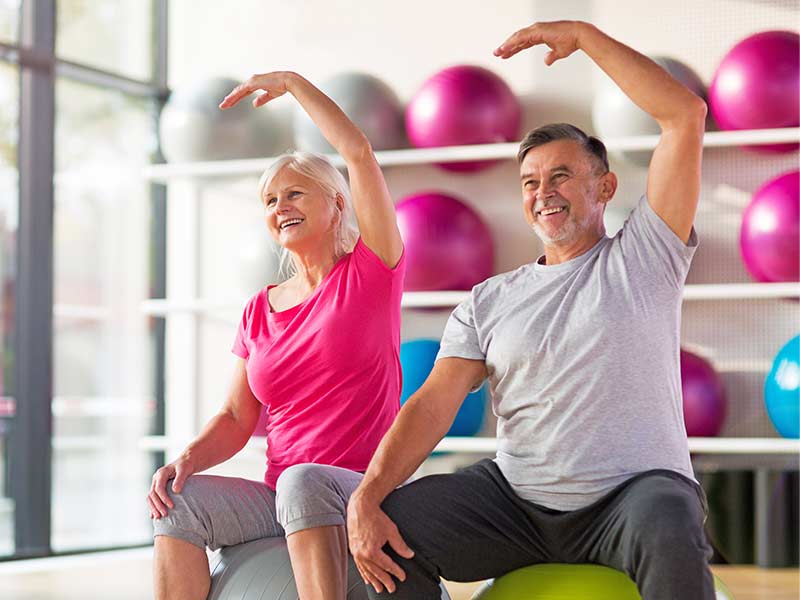Empty cart?
We can only assume that's because you haven't seen our latest offers
Sensilab uses cookies for their websites, which does not store personal data. Some cookies might already be installed. By proceeding to use this website you consent to the cookie usage.
Contact us online
100% satisfaction guarantee
Free delivery above €50
Contact us
info@sensilab.ie
Regular exercise can protect against many age-related complaints and diseases. Just half an hour a day is enough to strengthen the bones, to become more mobile again - and more satisfied. We show you how to train properly and which 7 exercises you can do every day.
From about the age of 30, we lose muscle mass continuously. Slowly at first, and more rapidly as we get older. Suddenly we are out of breath faster than we used to be. The movements are not so smooth anymore, the strength decreases and the coordination could also be better.
The good news is that it is up to us to change that. With targeted and regular sports units we can get fitter again and strengthen the body. Just half an hour of fitness a day stops the muscle loss and helps to alleviate or even prevent many age-associated diseases.
Unfortunately, most older people and seniors do not exercise enough. They sit too much, take the car too often or always perform the same movements. They also lack fresh air. This promotes many (widespread) diseases and impairs physical and mental well-being. With a special training for older people they stay in shape.
Senior fitness minimizes or prevents age-related diseases such as:
An effective workout for older people should target all muscles and keep joints supple. It should not be too strenuous and should not overburden those exercising. Focus on flowing movements and simple sequences of movements (especially important for untrained people).
Which sports are suitable for seniors?
The right gymnastics program makes you more agile and stronger. Swing, pendulum and rotation exercises are particularly suitable for building up muscles and keeping joints flexible.
A small tip: For some tasks it is helpful to have a stable chair at hand. Then you can hold on to it and do everything more smoothly and easily - and, depending on your fitness level, avoid falls.
Exercise is good for you. Exercise whenever you can, preferably every day, but at least every two days.
A simple daily sports schedule could look like this: You do something for your endurance for a quarter of an hour, for example, brisk walking, cycling, swimming or dancing. And on the same day, you plan another 15 minutes for gymnastics exercises for strong muscles.
It is important for all sports exercises to be performed calmly and with concentration. At the same time, you should also feel that they are doing something. In other words: you notice that your muscles are working. You get a little out of breath (but please do not get into compressed breathing). Or you sweat a little. This is good! Your body is challenged.
If the sports units are too easy for you, increase the number of repetitions or try more exercises.
In order to feel healthy and well, besides plenty of exercise and invigorating fitness exercises, a diet rich in vitamins and vital substances is essential.
Those who do not take in enough minerals and vitamins risk a lack of nutrients. The most common nutrient deficiencies include magnesium deficiency, vitamin D deficiency (especially in the dark season), calcium deficiency, iron deficiency and a lack of B vitamins. Here you can read how to detect a nutrient deficiency and how to refill your nutrient stores.
The sun vitamin D is very important for us. Especially in winter, many people suffer from vitamin D deficiency. Mushrooms, fatty fish or food supplements reliably help to supply the essential vitamin D. The vitamin is involved in many metabolic processes and can support the bones and teeth.
Also always a good idea on the menu: high-fat fish, linseed oil, avocados, chia seeds and walnuts. This is because the polyunsaturated omega-3 fatty acids found in them are vital. They support normal functioning of the brain, heart and vision.
You may be interested
Leaving already?
You’ve left [X] items in your cart.
We can’t guarantee the products will still be available when you return.
Check out now and get an EXTRA 10% OFF.

